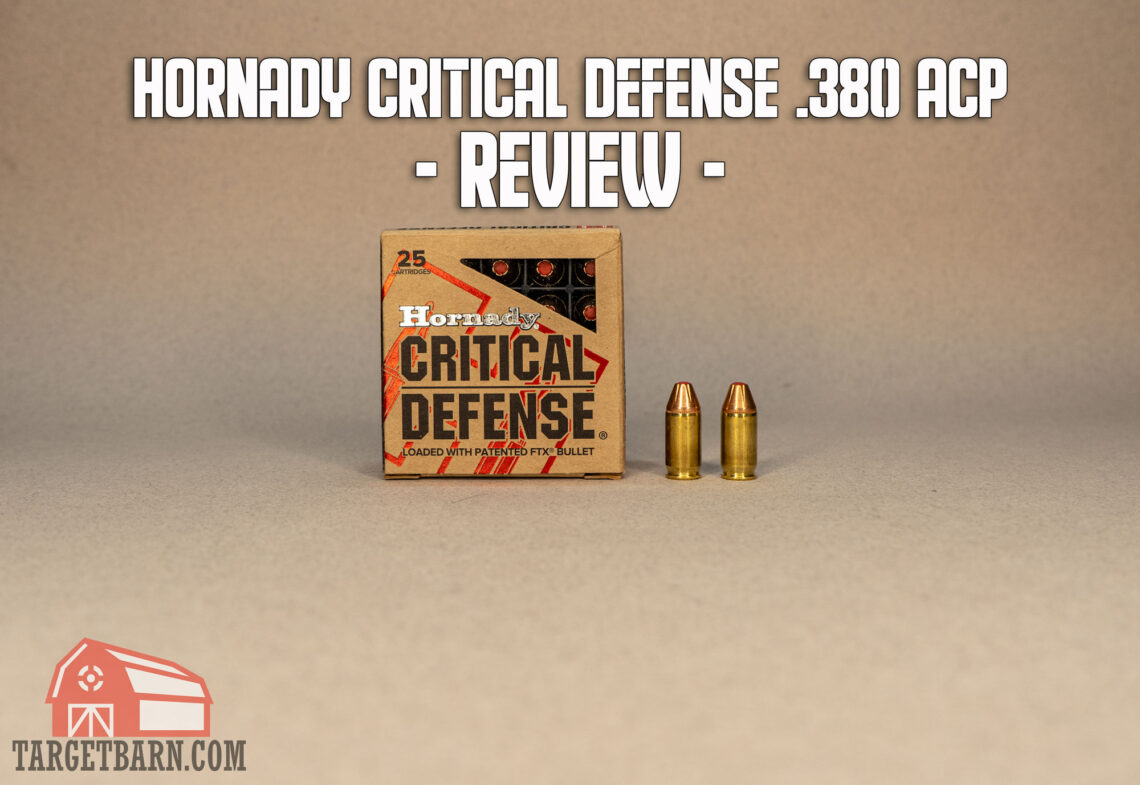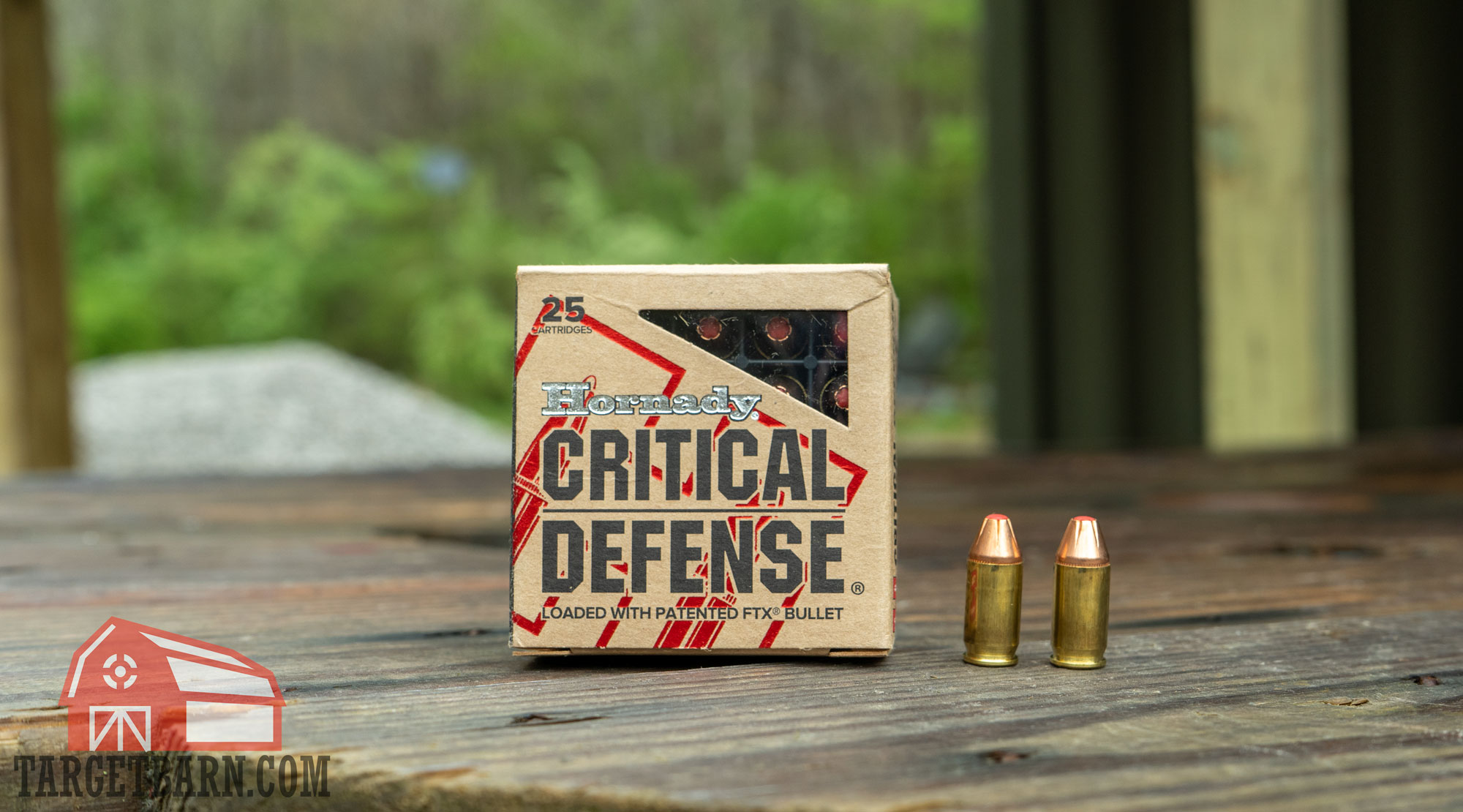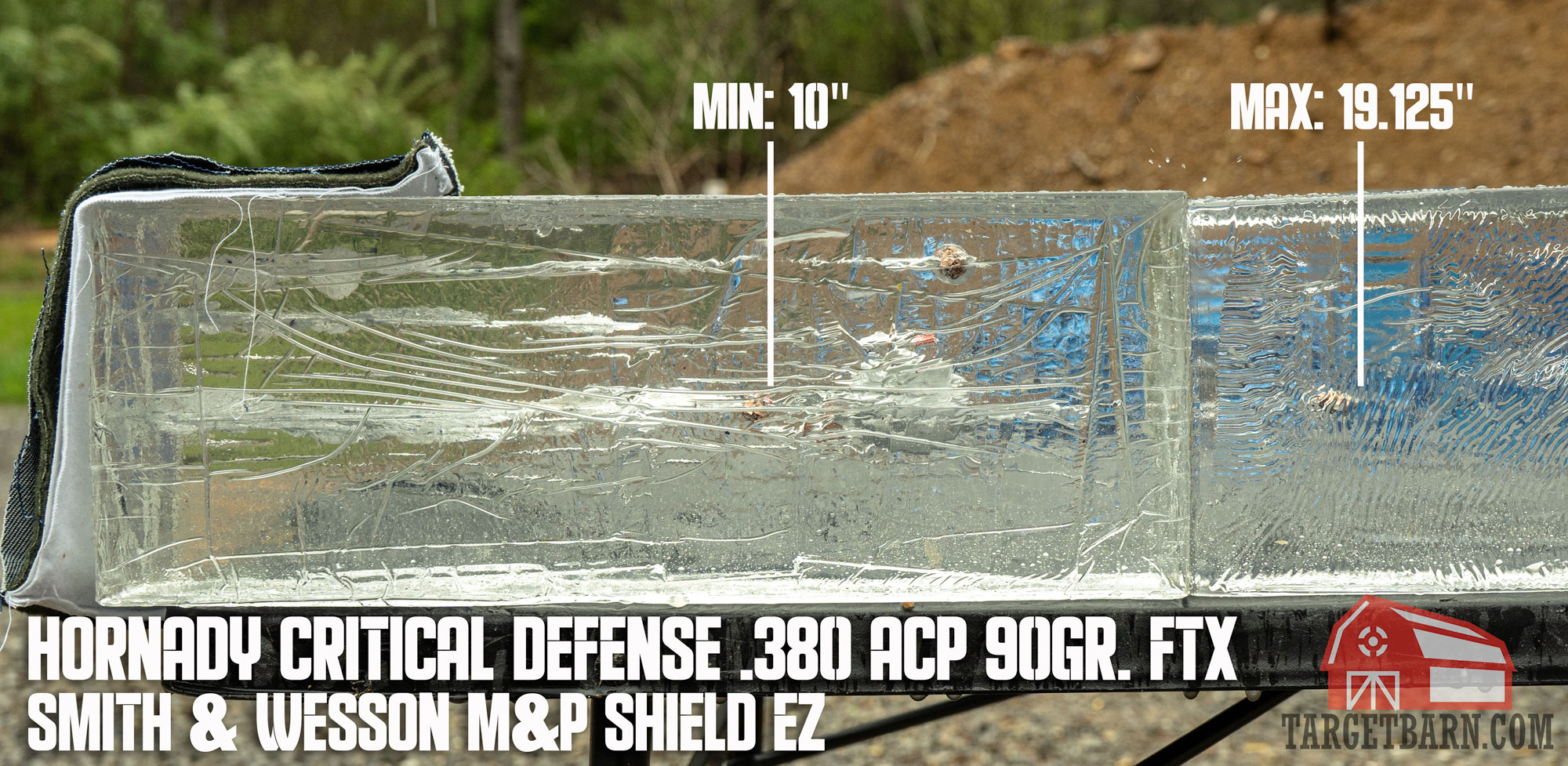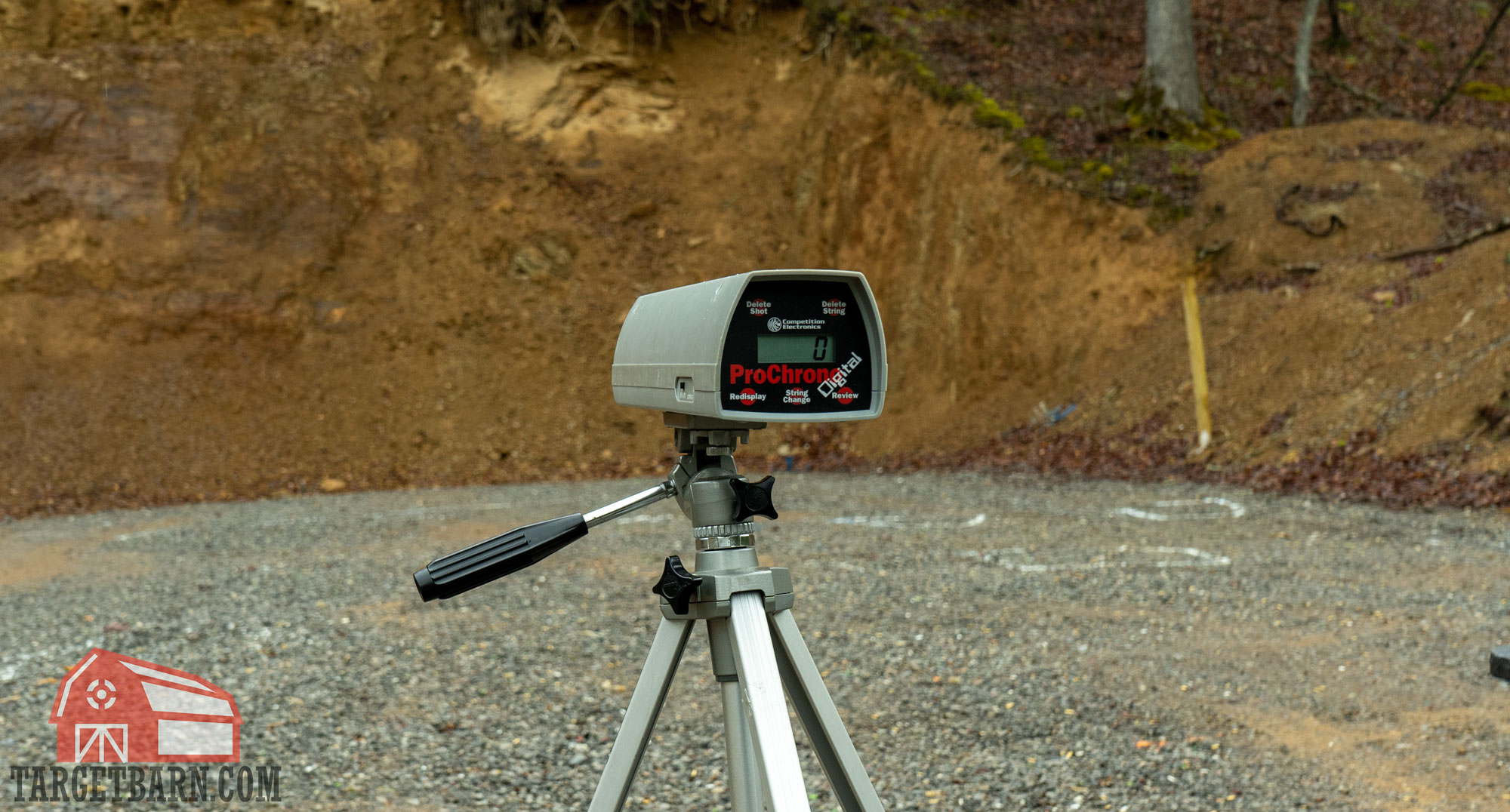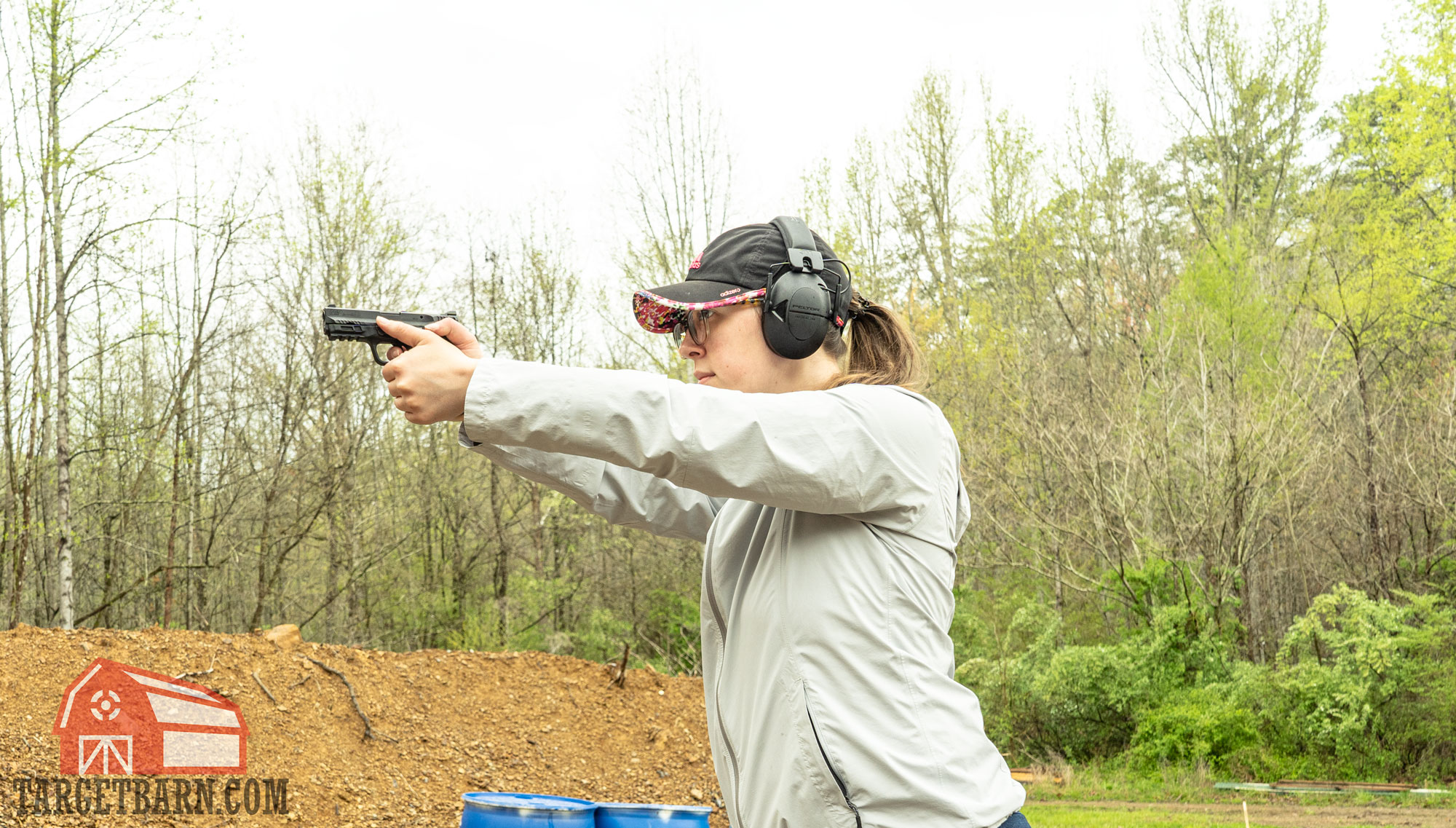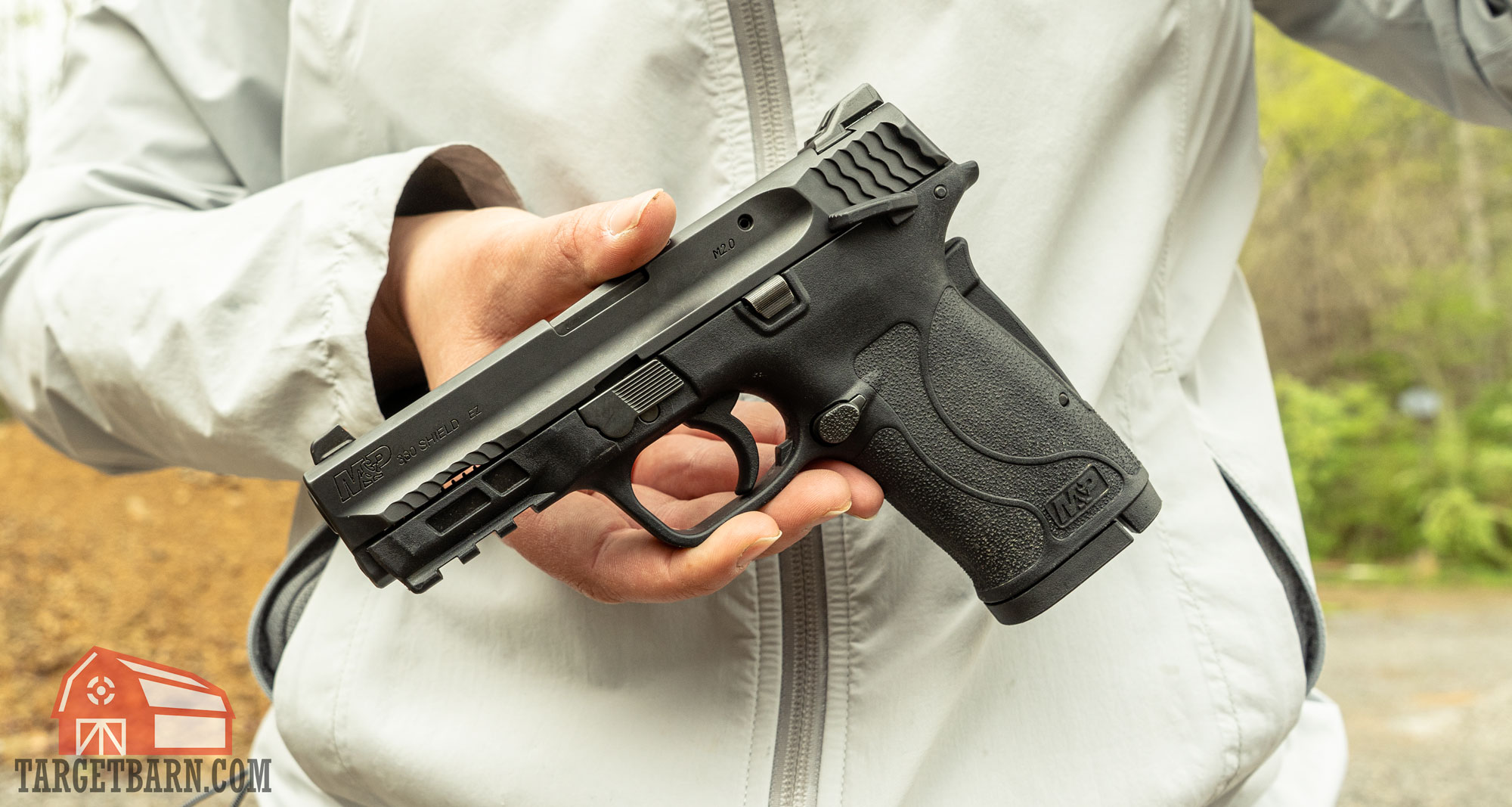If you’re looking to load your .380 ACP pistol with self defense ammo, you’ve likely come across the Hornady Critical Defense .380 ACP. With so many different options, picking the right CCW ammo that you can trust your life with can be confusing.
In this Hornady Critical Defense .380 review, I’m taking an in-depth look at the self defense round to see how it stacks up for self defense, complete with ballistic testing. Keep reading to see my findings!
Hornady Critical Defense .380 Review: Quick Takeaways
Here are some quick facts about the Hornady Critical Defense .380 ACP 90gr. FTX:
- Generally penetrates on the shallow end of the 12”-18” standards in ballistic gel
- Two rounds out of five failed to penetrate to 12”
- One round penetrated over 18” because the bullet failed to expand
- Critical Defense is not designed to penetrate intermediate barriers like auto glass or drywall
- Has manageable recoil out of small guns
- The FTX bullet is known for its accuracy and consistency
- Tends to run reliably in guns that are picky about JHP ammo
Hornady Critical Defense .380 ACP 90gr. FTX: Specs & Design
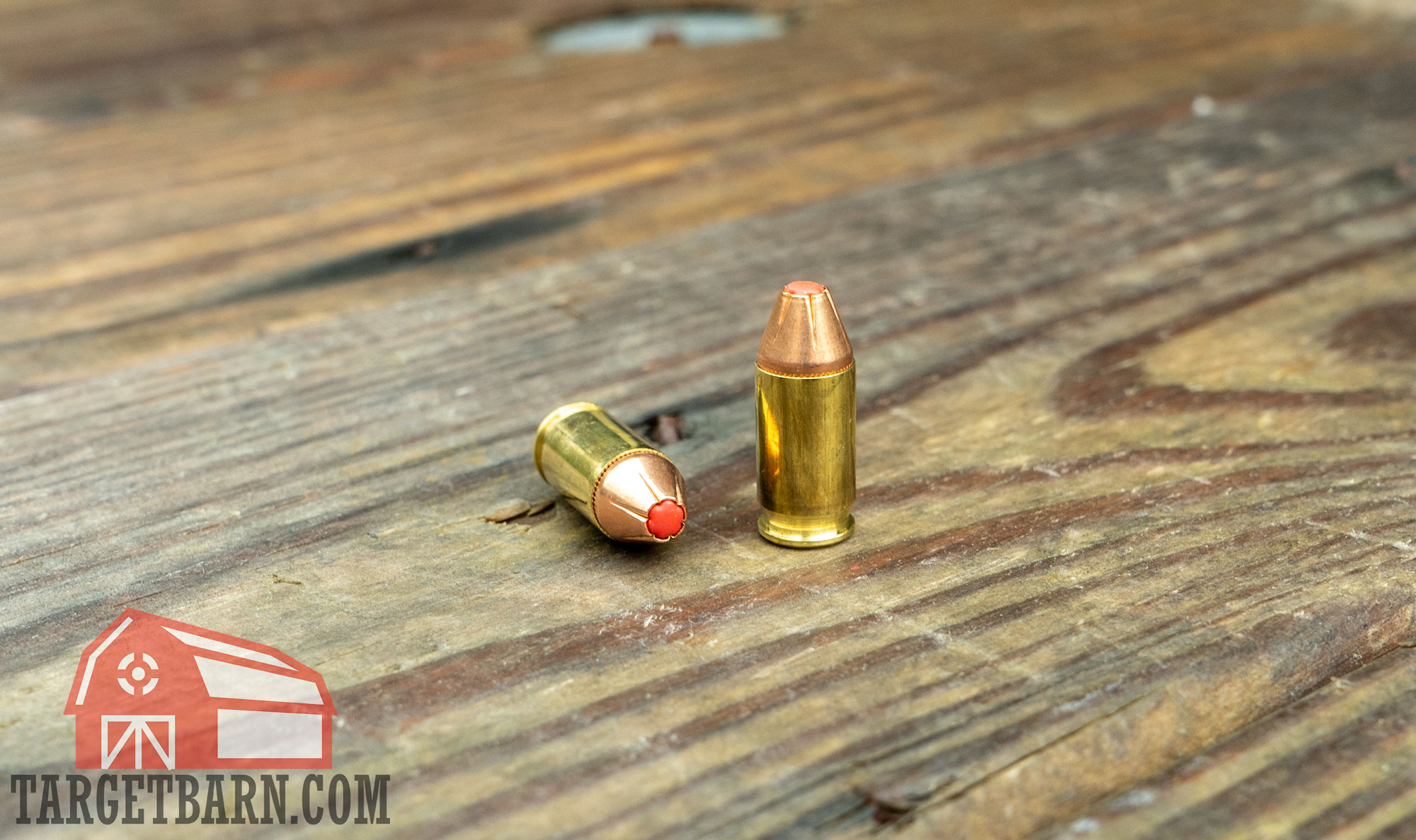
Hornady markets their Critical Defense line as a reliable defensive round for short barreled, concealed carry style guns.
The Critical Defense round in .380 ACP features a 90gr. FTX (Flex Tip) bullet that travels at velocities between 900 to 1,000fps. Hornady originally designed the FTX bullet for use in lever guns to solve feeding issues that traditional hollow point bullets faced. At the nose of the hollow point is a soft, red tip that Hornady claims helps the bullet to expand reliably and not become clogged in heavy clothing or other barriers.
The original design of the round features a nickel-plated case. However, due to supply chain restraints, Hornady suspended use of the nickel-plated cases in 2021. Hornady initially described this as a temporary change, however, the change has lasted over two years.
The company loads the round in Grand Island, Nebraska. In its .380 ACP self defense ammo lineup, Hornady also offers the American Gunner 90gr. XTP and Hornady BLACK 90gr. XTP.
Hornady Critical Defense .380 Ballistics
| Cartridge | 10-Shot Average Velocity | 5-Shot Average Penetration | 5-Shot Average Expansion | 10-Shot Average Muzzle Energy |
|---|---|---|---|---|
| Hornady Critical Defense .380 ACP 90gr. FTX | 970 fps | 13.03" | .448" | 188 ft-lbs |
I wanted to see how the Hornady Critical Defense .380 ballistically performed. So, I headed to the range to collect velocity data and put the round through some ballistic gel, similar to how the FBI performs their ballistic testing.
For the ballistic gel test, I shot 5 rounds out of a Smith & Wesson M&P Shield EZ from a 10-foot distance into Clear Ballistics 10% synthetic ballistic gel with a 4-layer fabric covering. I then measured penetration depth and expansion of the bullets.
Shooting the round through ballistic gel can give us an idea of how it might perform in a real world scenario. Keep in mind, there are a number of factors in choosing a good defensive round, and a ballistic gel test shouldn’t be your sole factor in picking a round.
Penetration
| Min. Penetration | Max Penetration | |||
|---|---|---|---|---|
| 10" | 10.875" | 12.25" | 12.9375" | 19.125" |
The FBI’s standards call for a penetration depth between 12” and 18”. This tends to correlate with rounds that adequately penetrate soft tissue and reach vital organs and structures, while not over-penetrating (potentially passing through the intended target).
Penetration is important because a round needs to reliably hit vital organs in order to incapacitate an attacker. It must do that after passing through a 4-layer fabric covering which simulates a heavy jacket and other clothing.
The average penetration depth of the five rounds I fired into the ballistic gel was 13.0375”. Two of the rounds did not meet the minimum requirement of 12”, reaching only 10” and 10.875”. One round over-penetrated to 19.125” because it failed to expand.
Expansion
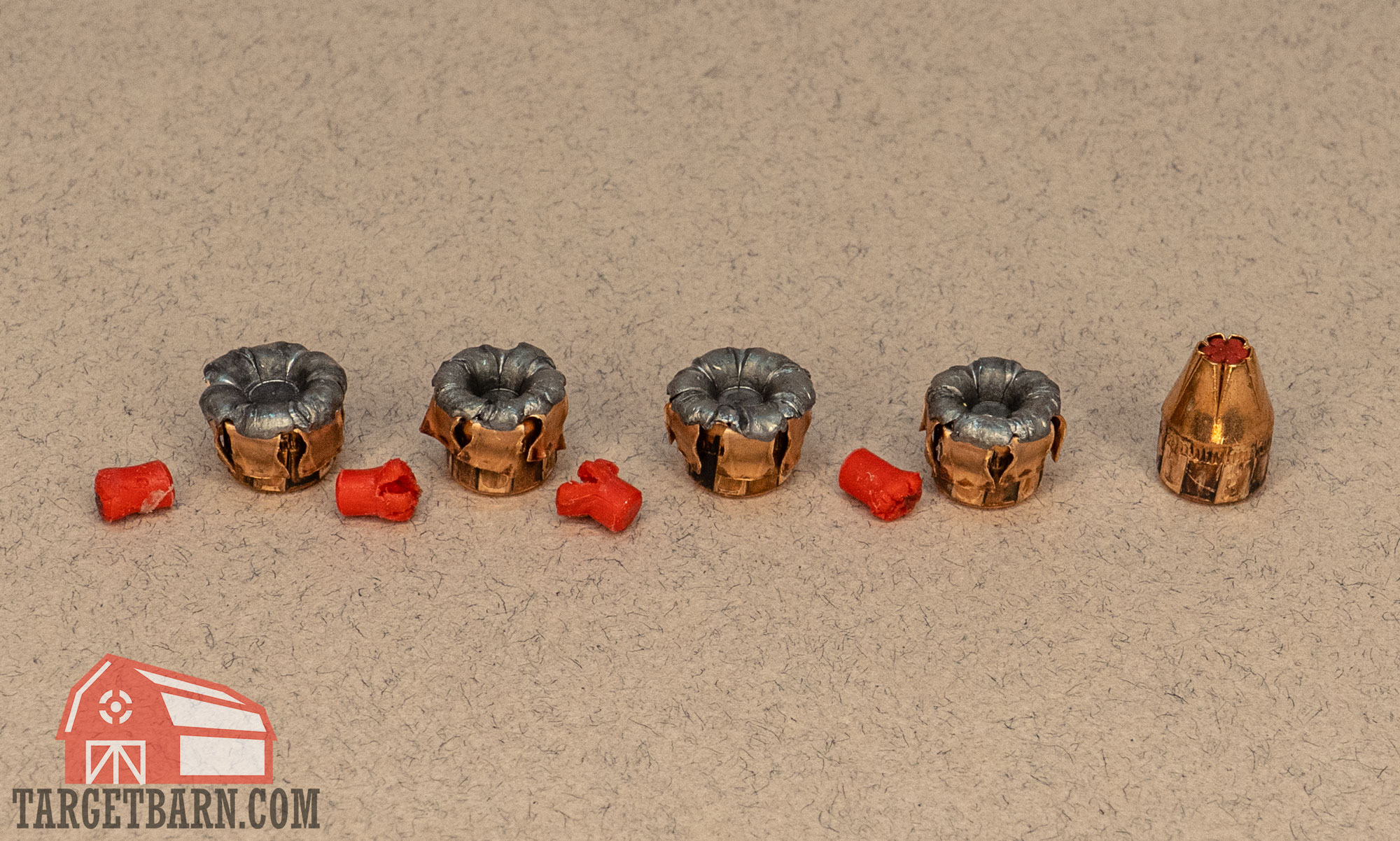
| Min. Expansion | Max. Expansion | |||
|---|---|---|---|---|
| .355" | .4585" | .4725" | .4765" | .478" |
Most self defense rounds use hollow point bullets that expand upon penetration. It’s important to have a round that adequately expands upon impact because this causes tissue disruption and creates a larger wound channel, making the round more likely to stop an attacker. Bullet expansion also prevents over-penetration.
To measure bullet expansion, I use a knife to extract the fired bullets out of the ballistic gel. I then use a digital caliper tool to get the expansion measurement.
There is no standard for bullet expansion, but ballistic experts generally look for an expansion of 1.5 times the original bullet diameter. That means for a .380 ACP bullet, the expanded diameter we look for is .5325”.
Of the five rounds I fired into the ballistic gel, none expanded to .5325”. The average expansion was .448”, and the widest expansion being .478”. One round completely failed to expand, which is the round that penetrated the deepest at 19.125”.
Velocity
I also brought my chronograph to measure muzzle velocity of the Critical Defense round. Hornady advertises the Critical Defense .380 as having a muzzle velocity of 1,000 fps out of a 4” barrel. The Smith & Wesson M&P Shield EZ I used has a 3.68” barrel.
I fired 10 shots and recorded an average muzzle velocity of 970 fps. The lowest velocity was 936 fps and the fastest was 999 fps.
Intermediate Barriers
Now, here’s the Hornady Critical Defense line’s biggest downfall.
Intermediate barriers are anything you to shoot through to hit something on the other side. For example, auto glass, car doors, and drywall are all barriers you might need your self defense round to pass through.
Hornady did not design the Critical Defense round to be barrier blind. That means it is not designed to expand in soft tissue after passing through an intermediate barrier. Some argue that the average concealed carrier isn’t likely to need a barrier blind round. If you think that your defensive round will need to be able to pass through intermediate barriers, you should consider a round like the Speer Gold Dot .380 90gr. GDHP.
Hornady Critical Defense .380 Shooting Performance
Now, let’s take a look at some of the other performance factors of the Hornady Critical Defense .380.
Reliability
One of the Critical Defense’s advantages is its reliability. JHP ammo can cause feeding issues in some guns because of the bullet’s shape. The Critical Defense tends to not have this issue, reliably feeding in even picky guns.
At the range, I experienced no issues with the Critical Defense .380. All rounds fed and fired as expected.
Accuracy
The FTX bullet that Hornady uses in the Critical Defense has a reputation for its accuracy. The design of the FTX is based off of Hornady’s XTP bullet which is popular among competition shooters for its extreme accuracy.
While I had no noticeable accuracy issues, it is important for you to see how the round shoots in your own gun. You should always sight in your self defense ammo in your defensive set up so that you know where your shots will hit.
Recoil
We want a self defense round with manageable recoil because harsh recoil may affect accuracy and follow up shots. While felt recoil has a number of factors like gun size and the shooter’s technique, ammo selection plays a big part as well.
The recoil of the Critical Defense .380 out of the Smith & Wesson M&P Shield EZ pistol is very manageable. I found the recoil of the Critical Defense to be slightly less harsh than that of the Speer Gold Dot .380 ACP 90gr. GDHP, though neither round had bad recoil.
Final Thoughts
To sum up this Hornady Critical Defense .380 review, here are some pros and cons.
Pros:
- Light recoil
- Accurate
- Tends to work well in guns that are picky with hollow point ammo
Cons
- Tends to penetrate ballistic gel on the shallow side, not always reaching the minimum 12″
- One round in our test failed to expand at all, while none of the other four rounds expanded 150%
- Not designed to work through intermediate barriers
The Critical Defense .380 ACP round gets a lot of hate, but it is also one of the most widely available .380 self defense rounds on the market. There are rounds out there with better ballistic performance, such as the Speer Gold Dot .380 ACP 90gr. JHP. However, the Critical Defense .380 is going to be a better choice than ammo that is not designed for self defense.
Whichever round you load up with, be sure you’re thoroughly testing your ammo in your CCW. And don’t forget, you can shop a wide selection of .380 ACP ammo here at Target Barn!

